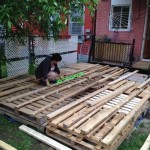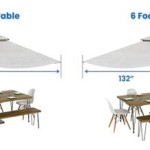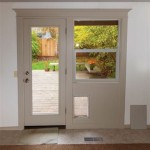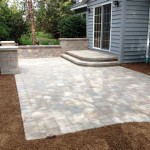How Much Does It Cost To Do a Paver Patio?
Determining the cost of a paver patio installation is a complex process, influenced by a multitude of factors. Homeowners considering this outdoor upgrade must understand these variables to accurately budget for the project. The overall expense can range significantly, depending on the size, complexity, materials used, and regional labor rates. A comprehensive understanding will allow for informed decision-making and a more realistic expectation of the investment required.
Initial cost estimations often begin with a per-square-foot calculation. However, this figure can be misleading without considering the additional expenses associated with site preparation, material delivery, and the intricacies of the installation process. It is essential to obtain detailed quotes from multiple contractors and thoroughly review the scope of work to ensure a complete and accurate assessment of the project’s financial implications.
The purpose of this article is to provide a thorough overview of the factors that contribute to the cost of a paver patio installation, enabling homeowners to navigate the planning and budgeting stages with greater confidence.
Key Cost Factors Influencing Paver Patio Installation
The cost of a paver patio installation is determined by several key factors, and each element plays a significant role in the final price. These factors include the selected paver material, the size and complexity of the patio design, the necessary site preparation, the cost of labor, and any additional features incorporated into the patio.
Paver Material Costs
The type of paver material chosen drastically impacts the overall cost. Options range from basic concrete pavers to more premium materials like brick, natural stone, and porcelain pavers. Concrete pavers are generally the most affordable option, offering a wide variety of colors, shapes, and sizes. Brick pavers, known for their classic aesthetic, tend to be more expensive than concrete pavers due to the manufacturing process and material sourcing. Natural stone pavers, such as flagstone, slate, and travertine, are the most costly, reflecting their unique textures, durability, and natural beauty. Porcelain pavers, a relatively newer option, offer exceptional durability, stain resistance, and design versatility, but they also come with a higher price point. The selected material should be considered based on aesthetics, budget, and functional requirements.
Variations exist even within material categories. For instance, plain concrete pavers are less expensive than those with intricate designs or textured surfaces. Similarly, larger, uniformly cut natural stone pavers will command a higher price than smaller, irregular pieces. When budgeting, it is essential to research the prices of different paver types available in the local market. Obtain quotes from multiple suppliers to compare costs and ensure you are getting the best value for your investment.
Patio Size and Complexity
The size of the patio directly correlates with the amount of materials required and the labor involved. A larger patio will naturally require more pavers, base materials, and edging, leading to a higher overall material cost. In addition to the square footage, the complexity of the patio design can significantly influence the price. Intricate patterns, curves, and custom features increase the time and skill required for installation, thereby raising the labor costs.
Simple rectangular or square patios are generally the most cost-effective to install due to their straightforward layout. More complex designs involving multiple levels, circular patterns, or integrated features such as fire pits or seating areas will necessitate more detailed planning, precise cutting, and specialized installation techniques. Therefore, careful consideration should be given to the design complexity when estimating the budget. Simplifying the design can reduce the overall cost without compromising the functionality or aesthetic appeal of the patio.
Site Preparation Requirements
Proper site preparation is crucial for the longevity and stability of a paver patio. Inadequate preparation can lead to settling, cracking, and other problems that necessitate costly repairs. The extent of site preparation required depends on the existing soil conditions, the slope of the land, and the presence of any obstacles such as tree roots or existing structures. Site preparation typically involves excavation, leveling, compaction, and the installation of a proper base layer. The base layer usually consists of compacted gravel and a layer of sand, providing a stable and well-draining foundation for the pavers.
If the existing soil is unstable or poorly draining, additional measures may be necessary, such as soil stabilization or the installation of drainage systems. Removing existing structures, large rocks, or tree roots can also add to the site preparation costs. It is essential to have a thorough site assessment conducted by a professional contractor to determine the specific site preparation requirements and accurately estimate the associated costs. Overlooking this critical step can result in unforeseen expenses and long-term problems.
Labor Costs
Labor costs represent a significant portion of the overall expense of a paver patio installation. These costs vary depending on the skill level and experience of the installers, the complexity of the project, and the geographical location. Experienced and reputable contractors typically charge higher rates, but their expertise can ensure a high-quality installation that minimizes the risk of future problems. Obtaining multiple quotes from different contractors allows for comparison and negotiation to secure a competitive price.
The labor costs typically encompass all aspects of the installation process, including site preparation, material handling, paver laying, cutting, and edging. Contractors may charge an hourly rate or a fixed price for the entire project. It is crucial to obtain a detailed breakdown of the labor costs in the written contract, specifying the scope of work, the payment schedule, and any additional charges that may apply. Furthermore, it is important to verify that the contractor is licensed and insured, providing protection against potential liability issues.
Additional Features and Enhancements
The incorporation of additional features and enhancements can add to the cost. These features include built-in seating, fire pits, outdoor kitchens, lighting, and water features. Built-in seating can be constructed from various materials, such as brick, stone, or concrete, and may require additional excavation and foundation work. Fire pits, whether gas-powered or wood-burning, necessitate specialized installation and safety considerations. Outdoor kitchens involve plumbing, electrical connections, and appliance installations, significantly increasing the overall project cost. Lighting and water features require electrical wiring and plumbing, adding to the complexity and expense.
When considering these features, it is essential to factor in both the material costs and the labor costs associated with their installation. It is also crucial to ensure that these features are compatible with the overall patio design and comply with local building codes and regulations. Prioritizing the most essential features and selecting cost-effective materials can help to control the budget while still enhancing the functionality and aesthetic appeal of the outdoor space.
Regional Variations in Paver Patio Installation Costs
Paver patio installation costs can vary significantly depending on the geographical location. Factors such as the cost of living, labor rates, material availability, and local regulations all contribute to these regional differences. Areas with a higher cost of living typically have higher labor rates and material costs, resulting in more expensive patio installations. The availability of specific paver materials can also influence the price, as materials that are readily available locally may be more affordable than those that need to be transported from distant locations. Local regulations and permit requirements can also add to the overall cost, as compliance with these regulations may necessitate additional expenses.
Cost of Living Considerations
The cost of living in a particular region directly impacts the labor rates charged by contractors. Areas with a higher cost of living, such as major metropolitan areas, tend to have higher labor rates due to the increased expenses associated with housing, transportation, and other living costs. These higher labor rates translate into higher paver patio installation costs. Conversely, areas with a lower cost of living generally have lower labor rates, making patio installations more affordable. When comparing quotes from different contractors, it is essential to consider the regional cost of living and adjust expectations accordingly.
Labor Rate Disparities
The availability of skilled labor can also influence labor rates. Areas with a shortage of experienced paver installers may experience higher labor rates due to increased demand. Conversely, areas with a surplus of skilled labor may have more competitive labor rates. Seasonal factors can also impact labor rates, as demand for outdoor projects tends to increase during the warmer months, potentially driving up prices. It is advisable to plan the patio installation during the off-season, such as the fall or winter, to potentially secure more favorable labor rates.
Material Availability and Transportation Costs
The availability of specific paver materials in a particular region can directly impact their cost. Materials that are sourced locally are generally more affordable due to reduced transportation costs. Conversely, materials that need to be transported from distant locations can be significantly more expensive. The transportation costs are influenced by factors such as fuel prices, distance, and the mode of transportation. When selecting paver materials, it is advisable to consider the availability of local options to minimize transportation costs and reduce the overall project expense.
Local Regulations and Permitting Fees
Local regulations and permitting requirements can also contribute to the cost of a paver patio installation. Many municipalities require permits for patio installations, especially if the patio exceeds a certain size or involves structural modifications. The permitting fees can vary depending on the location and the scope of the project. Obtaining the necessary permits can add to the overall cost and may also require additional time for approvals. Furthermore, local regulations may dictate specific construction standards or material requirements, potentially impacting the project's expense.
Strategies for Reducing Paver Patio Installation Costs
While the cost of a paver patio installation can be substantial, there are several strategies that homeowners can employ to reduce expenses without compromising the quality or functionality of the patio. These strategies include simplifying the design, choosing cost-effective materials, performing some of the labor themselves, and obtaining multiple quotes from different contractors.
Simplifying the Patio Design
One of the most effective ways to reduce the cost of a paver patio installation is to simplify the design. Intricate patterns, curves, and custom features increase the time and skill required for installation, thereby raising the labor costs. Opting for a simple rectangular or square patio with a straightforward pattern can significantly reduce the overall expense. Eliminating unnecessary features, such as multiple levels or complex edging, can also contribute to cost savings. A simple design does not necessarily compromise the aesthetic appeal of the patio, as careful selection of paver materials and landscaping can still create an attractive and functional outdoor space.
Selecting Cost-Effective Paver Materials
The type of paver material chosen has a significant impact on the overall cost. Concrete pavers are generally the most affordable option, offering a wide variety of colors, shapes, and sizes. Choosing basic concrete pavers over more expensive materials like natural stone or porcelain can result in substantial cost savings. Within the concrete paver category, opting for standard shapes and colors can further reduce expenses. Exploring different paver options and comparing prices from multiple suppliers can help to identify cost-effective alternatives that meet the desired aesthetic and functional requirements.
Performing Some of the Labor Themselves
Homeowners with the necessary skills and experience can reduce the cost of a paver patio installation by performing some of the labor themselves. Tasks such as site preparation, excavation, and material hauling can be completed by the homeowner, reducing the labor costs charged by the contractor. However, it is essential to accurately assess one's own capabilities and limitations before undertaking any labor-intensive tasks. Improper site preparation or installation can lead to structural problems and necessitate costly repairs. It is advisable to consult with a professional contractor before attempting any DIY work to ensure that the project is completed safely and correctly. If unsure, it is best left to the professionals.
Obtaining Multiple Quotes from Contractors
Obtaining multiple quotes from different contractors is crucial for securing a competitive price for a paver patio installation. Different contractors may have varying labor rates, material costs, and overhead expenses, resulting in significant differences in their overall bids. Contacting at least three to five contractors and requesting detailed quotes allows for comparison and negotiation. Reviewing the quotes carefully and comparing the scope of work, the materials used, and the payment schedule is essential. It is also important to verify that the contractors are licensed and insured, providing protection against potential liability issues.

How Much Does It Cost To Build A Paver Patio

So How Much Does A Paver Patio Actually Cost Hardscape Toledo

Paver Cost Landscaping Network

How Much Does A New Patio Cost To Build Quiet Village Landscaping

How Much Does A Paver Patio Cost 2024 Data Angi

Cost To Install A Patio 2024 Calculator

How Much Does It Cost To Build A Paver Patio Outdoor Concepts Kc

How Much Does A Paver Patio Cost

How Much Does A 20x20 Paver Patio Cost The Sealer

So How Much Does A Paver Patio Actually Cost Hardscape Toledo








